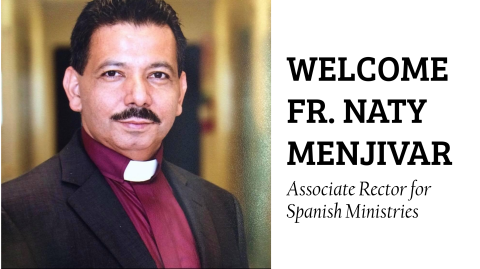In 2016 Bishop Doyle stated the following, “You and I have been called to this moment. We have been called to this time. We’re the ones who get to write the history of the church in this era. We’re the ones who get to pass on what this church does in the world to the next generation” (Small Batch, 131.) These prophetic words at the end of his book, Small Batch: Local, Organic, and Sustainable Church, apply to our current COVID-19 context with as much power as they applied to the original context. In fact, Doyle begins his book by describing the missional context of the church that year as a VUCA context. VUCA stands for volatility, uncertainty, complexity, and ambiguity. I could not think of better words to describe our own missional context today.
My intention here is not to give you a detailed summary or review of the Bishop’s book, which I highly recommend to all. I do agree with the Bishop’s writing because I have been a professor of early church history for my seminary since 2016, and I am familiar with his research.
Our Christian church began as a network of independent house churches of various small sizes, gathering in multiple settings (houses, shops, and even caves), and performing unique activities, often vastly different from the activities of other small congregations. We sometimes believe that after Jesus’ ascension and the coming of the Holy Spirit, his followers gathered in some large building or church, began to build cathedrals, and developed a hierarchical structure with Peter running the show. We also believe they practiced a well-defined liturgy that looked the same everywhere and always included the Lord’s supper or Holy Eucharist. The reality is that the life of the Church in the first three centuries was marked by smallness, innovation, flexibility, and uncertainty. And yet, despite their challenges, and amid great persecutions, the primary feature of the Church during those years was her rapid growth.
Beginning during the second decade of the fourth century, the Church started a movement towards institutionalization, canonization of its Sacred Scriptures, further development of a hierarchical form of governance, standardization of its evolving credal theology, and refinement of its sacramental liturgical practices. It is at this point that the church begins to turn from a network of small house congregations and missional communities to regional houses of worship, cathedrals, and monasteries.
Organizationally speaking, the Church went from being unstructured in most places to being highly structured everywhere. The movement from decentralization to centralization forced mostly local and at-home small gatherings to become regional large gatherings. This was necessary to accommodate the large numbers joining the church at the time. Unfortunately, churches where the laity had been deeply involved in ministry and governance became overly clericalized. We now had priests in charge of congregations and Bishops in charge of Dioceses, which overtime developed into a top down model of church where “father always knew best.” Lastly, the multiplicity of liturgical expressions and traditions became a formalized and uniformed liturgy, which universalized a very distinct sacramental theology.
Over the centuries, these movements towards increased standardization and clericalization developed into the Church we have today: Clergy-led, institutional, dogmatic, and overly preoccupied with budgets, liability, and buildings. The good news, however, is that the model of small missional communities has been experiencing a renaissance over the last few years. These small groups of Christians meet in coffee shops, small club houses, parks, and pubs. In these gatherings they build community, and “Live as missionaries and apostles as they serve their people group, study the Bible, pray, and eat.” (Doyle, 121.)
These groups exist not so much as feeders to a home congregation or traditional church, but as groups of believers, ministering and caring for each other and their community. The emphasis is on prayer and service to and with the people God has placed in their lives.
St. Dunstan’s has been the force behind the founding of one of these missional communities. A group of faithful parishioners identified a need, prayed for discernment, created a plan, took a few risks, and launched The Hope Center, a truly remarkable community of prayer and ministry for and with the homeless of our area. This is a great example of a missional community because their purpose was not necessarily to attract new members (although we would welcome them if they came,) but rather to create a community of people engaged in prayer and service for and with those in need.
Now, amid our COVID-19 crisis, God is calling us back to be flexible, creative, local, and adaptive. We are called to have a fair amount of mental and spiritual elasticity. We are living in a VUCA world and the Church may never be what it was before. A new reality is unfolding. We do not know how this future Church will function, but you and I have been called to be in this moment and to help shape the future Church in this place. Perhaps looking back at those first centuries might help us find a new direction. Perhaps turning around to face the multiple needs of our communities will make us a more missional congregation. Perhaps becoming less stuck in our ways and more open to God’s Holy Spirit will help us become the community God created us to be. One thing is for certain: those who embrace this moment, and use it as a training ground for ministry, will emerge stronger, healthier, and better equipped to build God’s kingdom in their own local context.
May God continue to bless you,
Fr. Roman+





